How to Install VMware ESXi VMvisor on VMware Workstation
There is no doubt that VMware vSphere is the pioneer in virtualization world. Day by day IT infrastructure is converting to virtualization where VMware vSphere is providing more features than any other virtualization software. VMware ESXi is the foundation of VMware vSphere. VMware ESXi is a bare metal hypervisor. So, a physical server is required to install VMware ESXi. Physical servers are usually costly and beginners or researchers cannot always arrange such a high priced physical server to install ESXi hypervisor and do RND. But there is no need to be worried if you are a beginner or researcher because VMware workstation allows to install VMware ESXi on it for doing RND. Installing VMware ESXi on VMware Workstation is not so difficult task. Just following some step by step procedures VMware ESXi can easily be installed on VMware workstation. In this article, I will show the necessary steps to install VMware ESXi on VMware workstation.
Installing ESXi on VMware Workstation
In this article, we will see how to install ESXi VMvisor on VMware Workstation. VMware ESXi installation on VMware Workstation can be divided into the following three steps.
- Installing VMware Workstation on Operating System
- Creating a new virtual machine for ESXi VMvisor
- Installing ESXi VMvisor on newly created virtual machine
Step 1: Installing VMware Workstation on Operating System
VMware Workstation is a hosted hypervisor. So, it should be run on a Host Operating System. VMware Workstation can be installed on both Windows and Linux Operating System and can be downloaded from VMware download page but you must have a VMware account. If you don’t have a VMware account, create an account in VMware [vmware.com] and login your account and then download VMware Workstation for your Operating System from VMware download page. Alternatively, you can download VMware Workstation from any software sharing site. In this article, I am using VMware Workstation 15 Pro on Windows Operating System.
VMware Workstation installation on Windows Operating System is so easy. Like other software application it will just ask to follow some graphical instructions. Complete VMware installation and run it. VMware Workstation may ask for license at first time running. You can find license by searching on Google or can use workstation for 30 days trial. The home page of VMware Workstation 15 Pro looks like the following image.
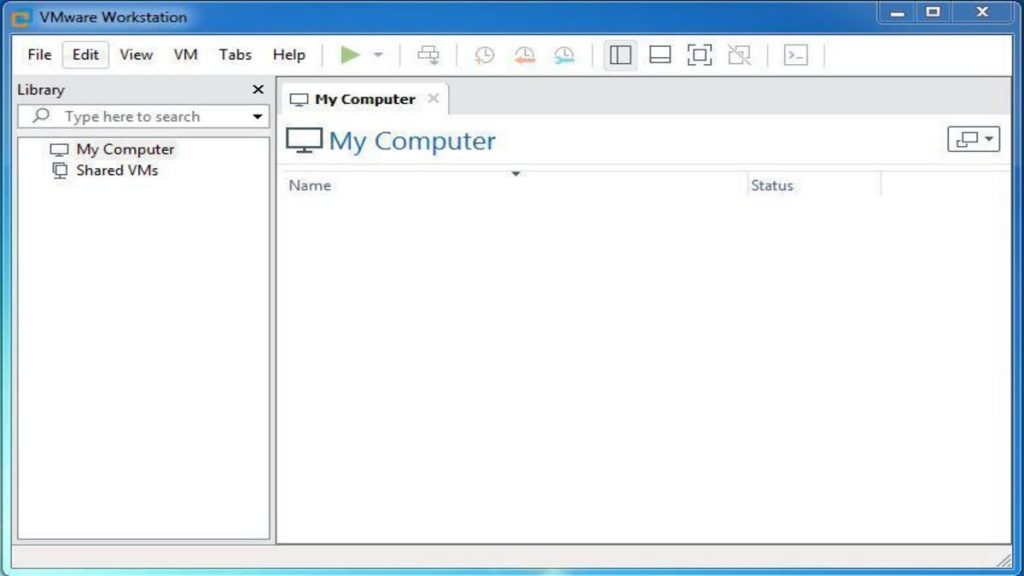
Step 2: Creating a New Virtual Machine in VMware Workstation
After installing VMware workstation on windows operating system, we will now create a new virtual machine in VMware workstation where we will install VMware ESXi hypervisor. The following steps will show how to create a new virtual machine in VMware Workstation.
Click on File menu and then choose New Virtual Machine… option. New Virtual Machine Wizard will appear.
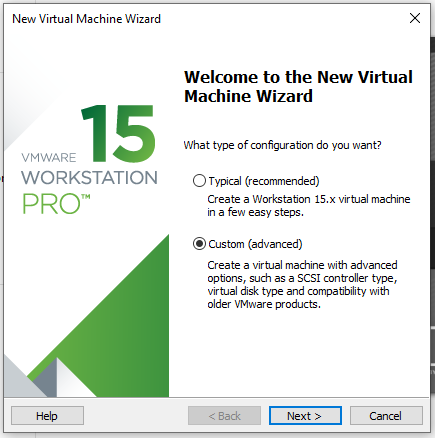
From the appeared window, choose Custom (advanced) option and then click Next button.
It will now ask to choose Hardware compatibility for the new virtual machine. We will keep the default Workstation 15.x option. So, click the Next button.
It will now ask to choose guest operating system. We will provide the ESXi VMvisor ISO later. So, choose I will install the operating system later option and click on Next button.
It will now ask to choose Guest Operating System. As we will install VMware ESXi VMvisor, choose VMware ESX from Guest operating system panel and then click Next button.
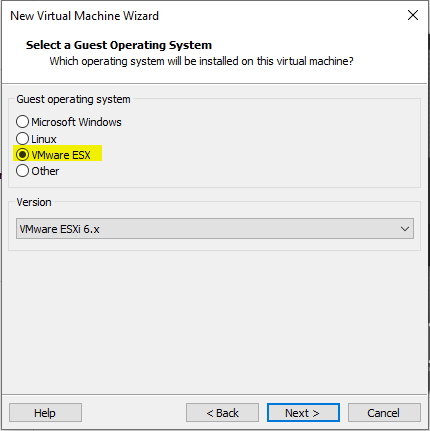
It will now ask to provide virtual machine name and the location of this virtual machine where the virtual machine’s files will be kept. As I will install ESXi 7 hypervisor, I am providing VMware ESXi 7 in Virtual machine name input field. I am keeping the default location because I have sufficient space in C drive but if you want, can change the location in another drive clicking the Browse button. Click Next button.
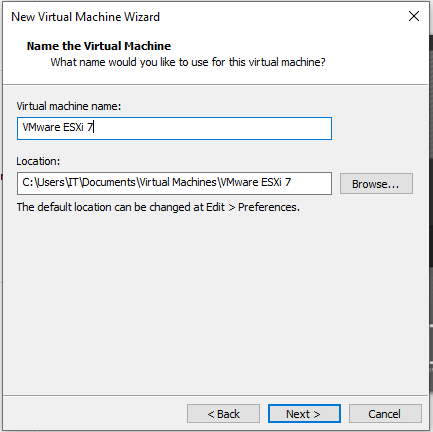
Now it will ask to specify processors for this virtual machine. As we will install ESXi VMvisor which will run more virtual machine, we have to assign as much processors as we can. For my ESXi host machine I am assigning 2 processors and 2 cores. So, total processor will be 4. After specifying processors for ESXi host machine, click on Next button.
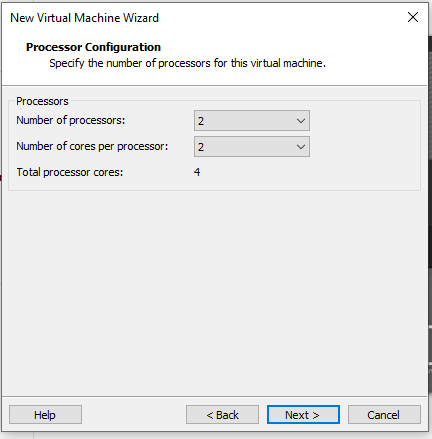
After assigning processors for ESXi Host, it will now ask to assign memory for the VMware ESXi. Put the memory amount that you want to assign for the ESXi host from Memory for this virtual machine input box. Value can also be specified by moving slider from the left side bar. After specifying Memory value, click the Next button.
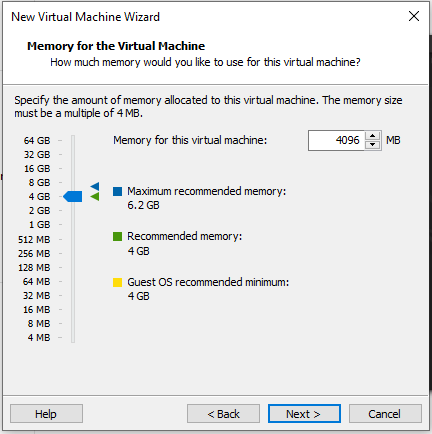
Now it will ask to choose network type. We will choose bridge network for the ESXi host so that we can assign LAN IP on management network. So, click on Use bridge networking radio button from Network connection radio button panel and then click on Next button.
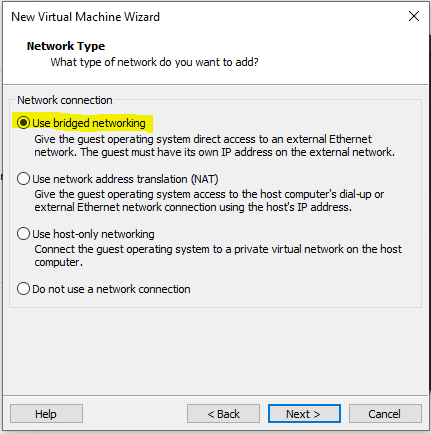
After specifying network connection, it will now ask to select I/O controller type. We will select the recommended one which is Paravirtualized SCSI. So, click on Paravirtualized SCSI from I/O controller types panel and then click on Next button.
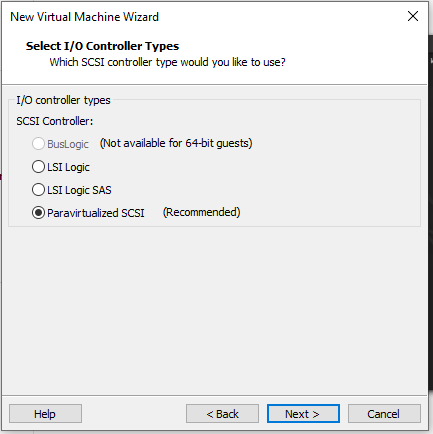
It will now ask to choose virtual disk type of the ESXi host. We will assign SCSI disk type for the ESXi Host. So, click on SCSI radio button from Virtual disk type radio button panel and then click on Next button.
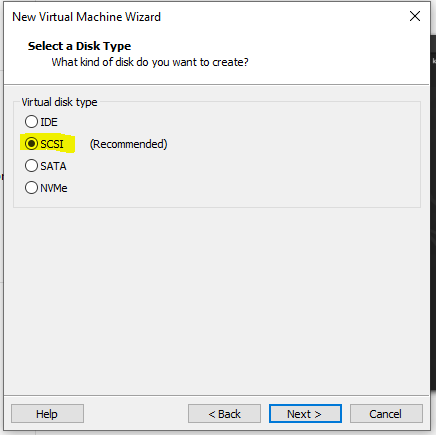
It will now ask whether we want to create new HDD or choose an existing one. We will create a new virtual disk for the ESXi Host. So, click on Create a new virtual disk radio button Disk panel and the click on Next button.
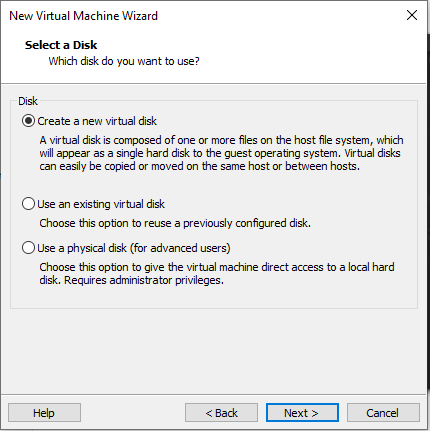
Now it will ask to specify the disk size. Recommended minimum disk size for ESXi Host is 40GB. So, specify the disk size in Maximum disk size input box and then click on Next button.
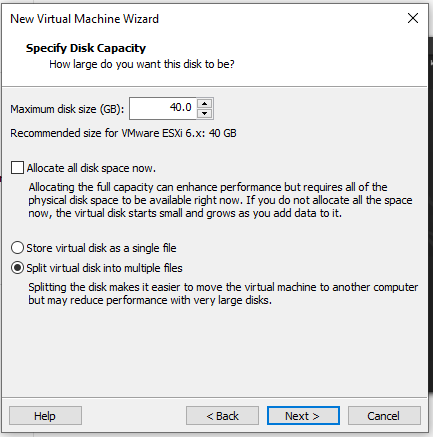
It will now ask to specify the location of virtual disk (.vmdk file). If you want to keep the virtual disk to your desired location, click the Browse button and specify the location where you want to keep the created virtual disk. I am keeping the default location which is C:\Users\IT\Documents\Virtual Machines. Click the Next button after specifying disk location.
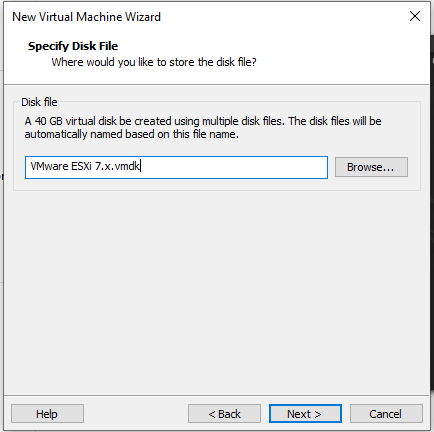
It will now show the summery that we have specified in our previous steps. If you find that we have mistaken to specify any resources for the ESXi virtual machine, click one Customize Hardware button otherwise click Finish button to create our desired virtual machine where we will install our ESXi VMvisor.
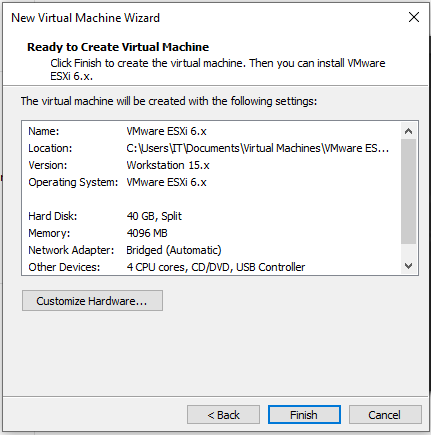
A new virtual machine will now be created where we can be able to install ESXi VMvisor. The new ly created VM will be found in My Computer library.
Step 3: Installing ESXi VMvisor on Newly Created Virtual Machine
After creating a virtual machine in VMware Workstation, we will now start the virtual machine but before starting the VM we need to specify the installation media. As we will install ESXi VMvisor from ISO file, download latest ESXi VMvisor ISO file from VMware Download page [https://www.vmware.com/go/download-vsphere] and keep it in a folder of Computer Disk. Without creating account and purchasing license, VMware does not allow to download ISO file. So, create an account and then download free trial which will give you 60 days free trial. It is also possible to get free license of ESXi with limited features.
After arranging ISO file, right click on the created virtual machine and then click on Settings option. Virtual Machine Settings window will appear.
In Virtual Machine Settings window, click on CD/DVD option from Hardware tab and then click on Use ISO image file radio button and specify the ISO file location where you have stored the ISO file by clicking Browse button from Connection panel. Also make sure the Connect at power on checkbox is selected in Device status panel. Click OK button.
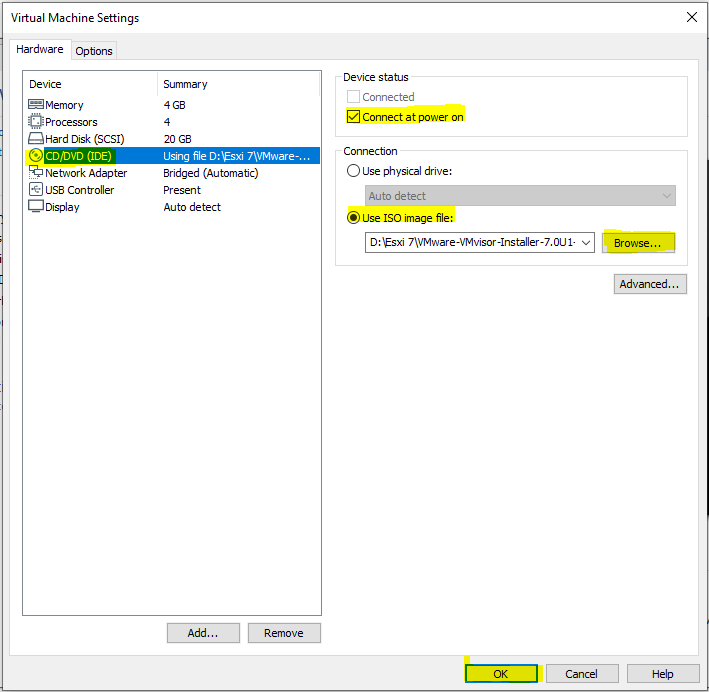
Now make right click on virtual machine again and go to Power option and then click on Start Up Guest option. VM will now start booting from ESXi VMvisor ISO file and follow the prompted instructions to install ESXi VMvisor on your virtual machine.
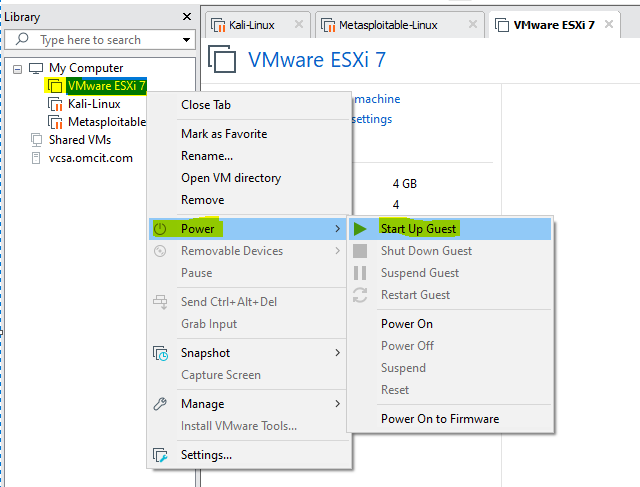
If it is your first time to install ESXi VMvisor, follow my article on VMware ESXi Installation and Basic Configuration with step by step screenshots. I hope it will help you enough to install VMware ESXi installation.
How to install ESXi hypervisor on VMware Workstation has been discussed in this article. I hope you will now be able to setup ESXi LAB with VMware workstation. However, if you face any confusion, feel free to discuss in comment or contact me from Contact page. I will try my best to stay with you.
Why not a Cup of COFFEE if the solution?

